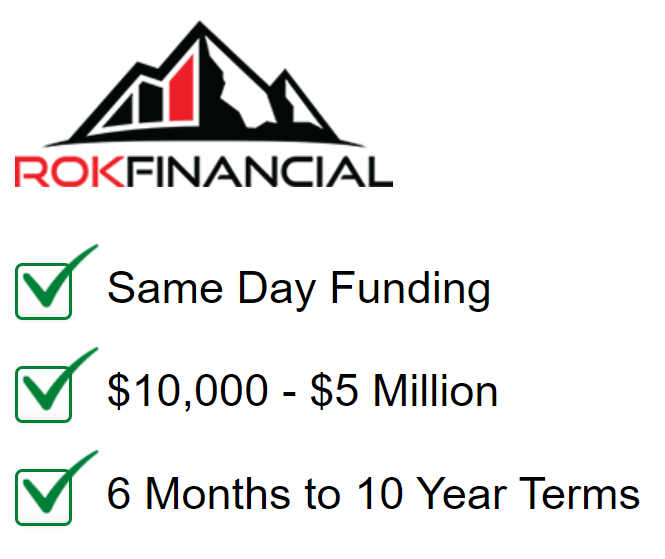
Navigating the various financial lending options can be complicated. But worry not because this article helps you understand how to get a business loan and the most common types of asset based loans.
Statistics show that small businesses owners create 62% of jobs and overall employ 47.5% of Americans. However, the trick is how you finance your new business.
Congratulations if you’re about to launch your new small business. Small businesses contribute significantly to a vibrant and healthy economy.

How Do Asset Based Loans Work?
Asset-based lending is a type of financing you secure through your tangible assets. These include your accounts receivable, machinery, inventory, or any other form of collateral.
Asset-based financing allows you to borrow about 50% of your equipment or inventory. Otherwise, you can borrow up to 75%-80% of the value of your accounts receivables.
Asset-based lending is more accessible for small businesses to qualify for than other types of loans. That’s because you have tangible collateral, which mitigates the lender’s risk. If you default, the lender seizes the collateral and sells it to recover the losses.
Generally, asset-based loans are of two types:
- Traditional business term loans.
- Business lines of credit.
What happens is the asset-based lender gives you capital based on the current market value of your desirable secured assets in advance. You can either opt for asset-based financing that is a term loan or a line of credit.
The first option requires you to pay the advance and interest within a given period. On the other hand, a line of credit allows you to draw the funds you need, only paying interest on the money you spend.
It’s worth mentioning that in both cases, you leverage your assets, such that in case you default, the lender just takes the assets and sells them to recover the money. If you cannot qualify for financing, asset-based lending is one of the best options to turn to to help cover working capital and your cash flow needs.
The Most Common Types of Asset-Based Loans
With a better understanding of how asset-based financing works, it’s easier to understand the common types of asset-based loans and choose the right one for your small business. The most common asset-based loans include:
Inventory Financing
If your small business has a significant stockpile of inventory, inventory financing can serve you well. It’s a great option, especially for those in the retail, wholesale, or manufacturing industries. The asset-based lender uses the inventory as collateral.
After determining the resale value of your inventory, the lender uses that value to secure your loan. After this, you can get your loan and use the inventory. But if you fail to repay the borrowed amount, the lender has the right to repossess the inventory to repay the debt.
Accounts Receivable/Invoice Financing
If your small business is service-based and invoices its customers, you can get an asset-based loan for receivables due within 30-90 days.
If your existing invoices are large, you can expect to get a larger loan and vice versa.
Some people often confuse invoice financing with invoice factoring. However, these differ. With invoice financing, control over your assets remains with you, while with invoice factoring, the asset-based lender sells your invoices to a third party.
In factoring, it’s like the lender buys your outstanding invoices and pays you the total amount. Later, they collect the payments from your customers for you. After collecting all the money, they pay you the remaining amount but keep some as payment for their services.
Therefore, the main difference between invoice financing and factoring when taking an asset-based loan with your account receivables is that while the former is a true loan, the latter involves selling your existing invoices.
Equipment/Machine Financing
Machinery or equipment your business owns can act as collateral for an asset-based loan. You get a loan depending on the total value of these assets.
If you want to invest in other expensive equipment to help launch your small business, use the equipment you outrightly own to act as security for you to get asset-backed financing. The higher the equipment value, the more the loan amount.
Business Lines of Credit
When you need a business line of credit, they’re always available. Even for already established businesses, lines of credit are essential and can get you an asset-based loan when faced with cash flow challenges.
It’s important to note that businesses with real estate property can use this fixed asset as collateral for an asset-based loan. However, you must be the outright owner of the property, with no outstanding mortgages.
Asset-Based Lending Terms
The lending terms of asset-backed loans vary from one lender to another, depending on the products they offer. Similarly, asset-based lending rates vary. In most cases, the lending terms depend on the type of collateral your business uses to secure the loan.
For example, a loan where you use equipment as collateral might entail longer lending terms. On the other hand, accounts receivables secure a loan with shorter terms. The interest rates vary between 7% and 30% and can be higher than most banks charge.
How to Apply for an Asset-Based Loan
The process of applying for an asset-based loan is easy. However, documentation is mandatory. Lenders require your invoices, bank statements, and tax returns, especially if you already set up your business. That way, potential investors can see your investment is solid.
For inventory-based loans, ensure your inventory management system is strong. Doing so makes it easy for the lender to go through your inventory, determine the levels, and qualify you.
Also, the asset-based lender needs to know you’re not using your assets as collateral elsewhere and that you’re paying your taxes. They wouldn’t want to have the collateral or assets seized.
Provided you have the proper documentation and meet the asset-based financing terms of your lender, the application process is easy.
Advantages of Asset-Based Lending
Now that you know the common types of asset-based financing, how to apply, and the terms of these loans, probably the question on your mind is, “Why would I go for this type of financing, especially when I’m risking my assets?”
Some of the advantages of asset-based lending include:
- They’re easier to qualify.
- They require less individual risk.
- They’re a great option to help cover cash flow and working capital needs.
- They are a flexible financing solution where one is unqualified for financing from other lenders.
These advantages don’t mean these loans have no disadvantages. In most cases, they have higher interest rates than bank and SBA loans. In addition, the assets you own limit asset-based loans. And if the amount you want is large, your assets might not be enough to act as collateral.
Takeaway
Your small business will reward you handsomely and also help better the economy. If you already own several assets, including machines, equipment, and inventory, you can turn to asset-based financing to get capital and cash flow money.
Identify the type of loan that best fits your business and find a lender with the best loan terms for you.
Apply Now
About the Author, Madison Taylor
Madison Taylor is the Brand Ambassador at ROK Financial. She is responsible for raising brand awareness and business relationships with business owners across the country. Madison loves that she plays a small role in getting Business Back To Business Through Simple Business Financing and looks forward to hearing what you think about the blogs she creates! Madison has been working in the financial space for six years, and loves it! When she is not at work, you will find her at home learning a new recipe to test out on her family or going on new adventures with her friends.